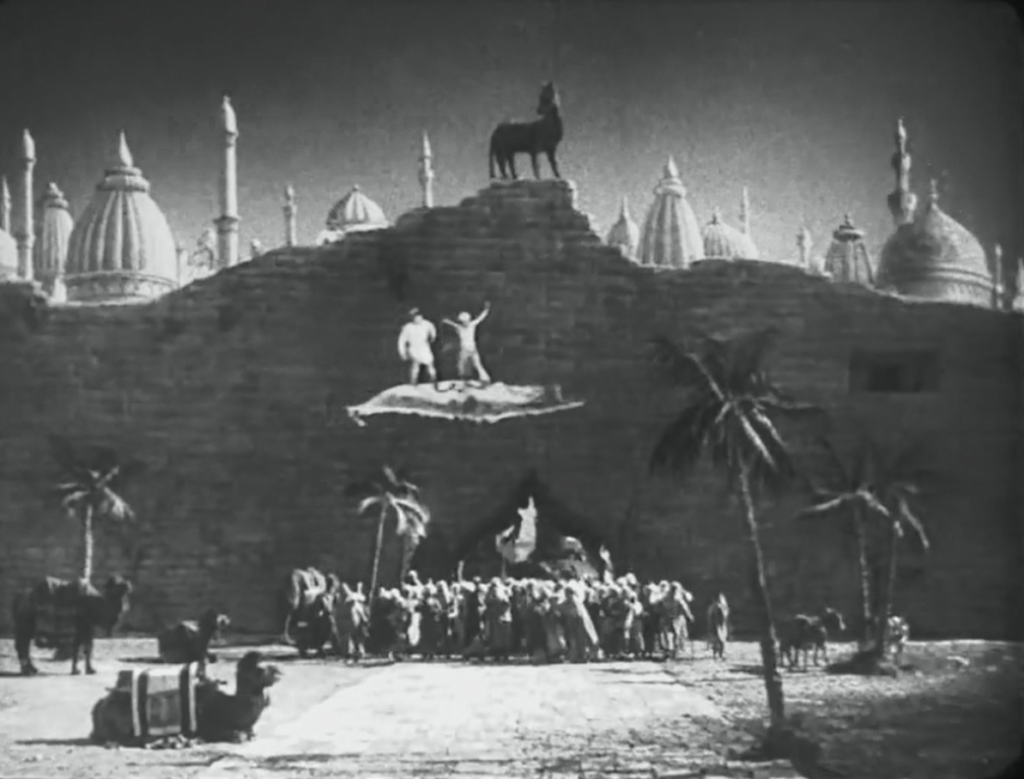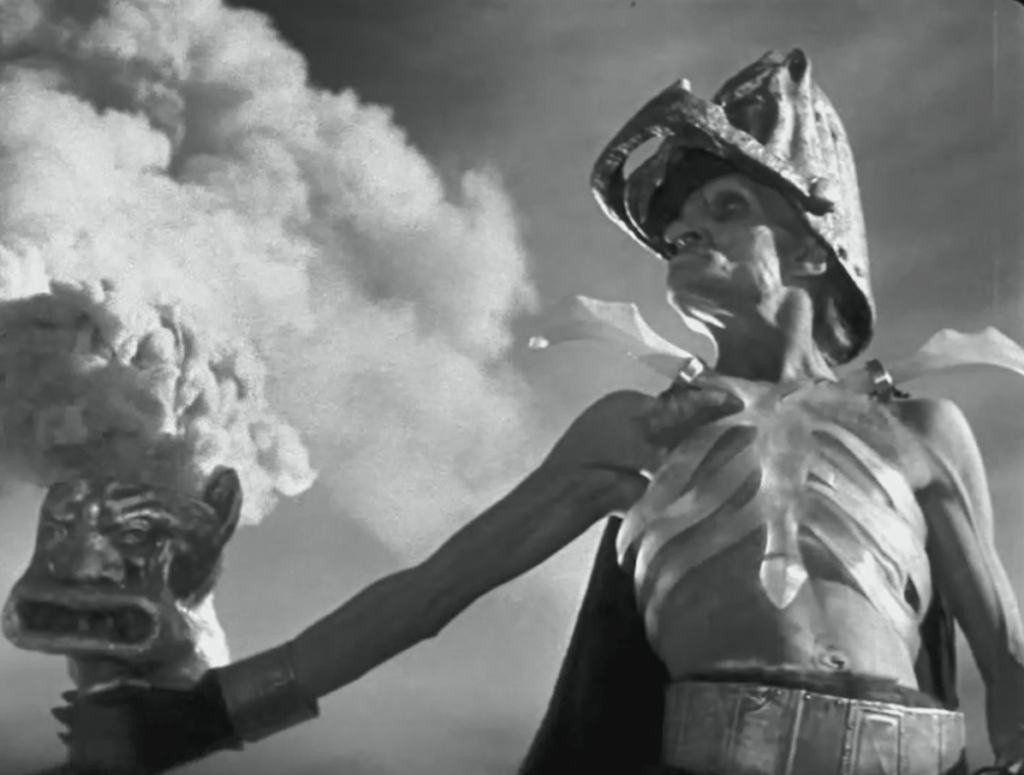
After completing in rapid succession the Russian fantasy films Wish Upon a Pike (1938), Vassilisa the Beautiful (1939), and The Humpbacked Horse (1941), Aleksandr Rou wouldn’t make another full length feature film for three years, as the war relocated Soyuzdetfilm Studios (later to become Gorky Studios) from Moscow to Dushanbe in the then-Soviet republic of Tajikistan. Arriving in theaters at the end of the war, Kashchei the Immortal (1944) – alternately Kashchey or Koschei, among many other variant spellings, but we’ll stick to the one – brings to life a famous supernatural antagonist from Russian folklore, often referred to as “the Deathless,” who can only be killed by locating his well-hidden heart and destroying it. In Rou’s hands, the character becomes a militaristic tyrant and an obvious stand-in for Hitler, conquering lands far and wide, and residing in a seemingly impenetrable fortress with a glowering and toothy façade. Stressed throughout is the inherent power of one’s native land to overcome enemies; in traditional folk tales, it’s defending native Rus against encroaching Mongols; here, the allegory is Nazi invasion. Late in the film, the hero inhales some of his native soil, raises his sword, and shouts to his army, “People’s strength, rise up!” Yet the film is more than propaganda. Rou also draws directly from The Thief of Bagdad (1924) to fill out his somewhat rushed 63 minutes. (Is this version cut down? The climax seems to skip ahead quite jarringly. I’d be interested to know.) The end result is a spectacle with impressive production design and charmingly inventive special effects – one of Rou’s best fantasy adventures.
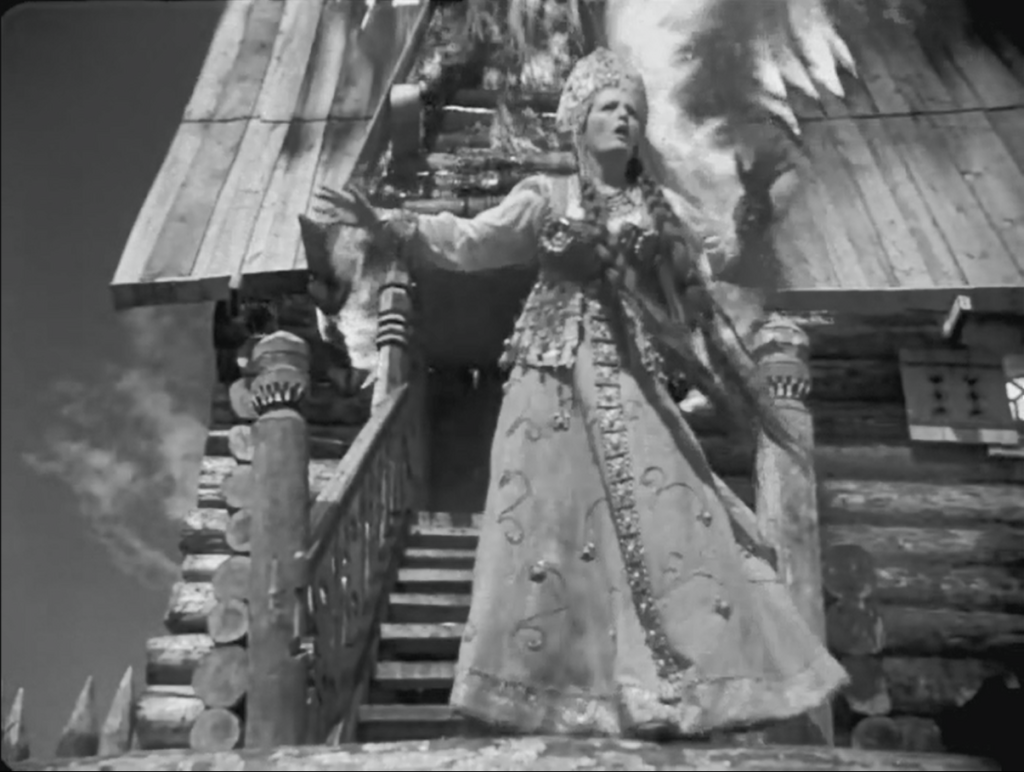
A village is raided and burned by the horde of Kashchei the Immortal.
Nikita Kozhemyaka (Sergei Stolyarov) is soon to be married to the beautiful Marya Morevna (Galina Grigorieva), who at the start of the film is rebuffing another suitor. After Marya and the other young maidens of the village release doves with messages to their lovers, a rampaging force of horned-helmeted stormtroopers descends – in an impressively staged scene anticipating the opening massacre of Conan the Barbarian (1982), of all things. The wooden buildings are set ablaze, in what appears to be a combination of miniatures and full-sized mocked-up structures built and burned while the actors flee in close proximity to the flames. Marya is kidnapped, and when Nikita reaches the village it’s already in ashes. He consults with Father Mushroom, a miniature spirit who would later appear in Rou’s Father Frost (aka Jack Frost, 1964), and is told that Kashchei is behind the destruction. He also gives Nikita a “cap of darkness” (his mushroom hat) which grants its wearer invisibility. In pursuit of his foe, Nikita travels to a distant, apparently Persian city (with palm trees, minarets, and statues of horses) which has been conquered by Kashchei. Nikita is ordered by one of his acolytes to dismount and bow to a hideous idol of a “jackal” (a heavy-browed monstrosity with snaggle teeth in a wide mouth). He refuses, and uses his cap of darkness to liberate a prisoner, Bulat the Joker (Aleksandr Shirshov), who is about to be executed for having stolen a magic carpet. (The carpet, still hanging in the air, is restrained by a heavy chain linked to a massive ball. It’s an image one might expect to find in a Terry Gilliam movie.) With his moustache, lack of a shirt, and slightly darkened skin, Shirshov is the spitting image of Douglas Fairbanks in The Thief of Bagdad; like Fairbanks, Bulat and Nikita ride upon the flying carpet as it bears them over the walls of the city. Though the optical effect has its limitations – the two are as transparent as ghosts – the carpet flutters realistically in the wind.
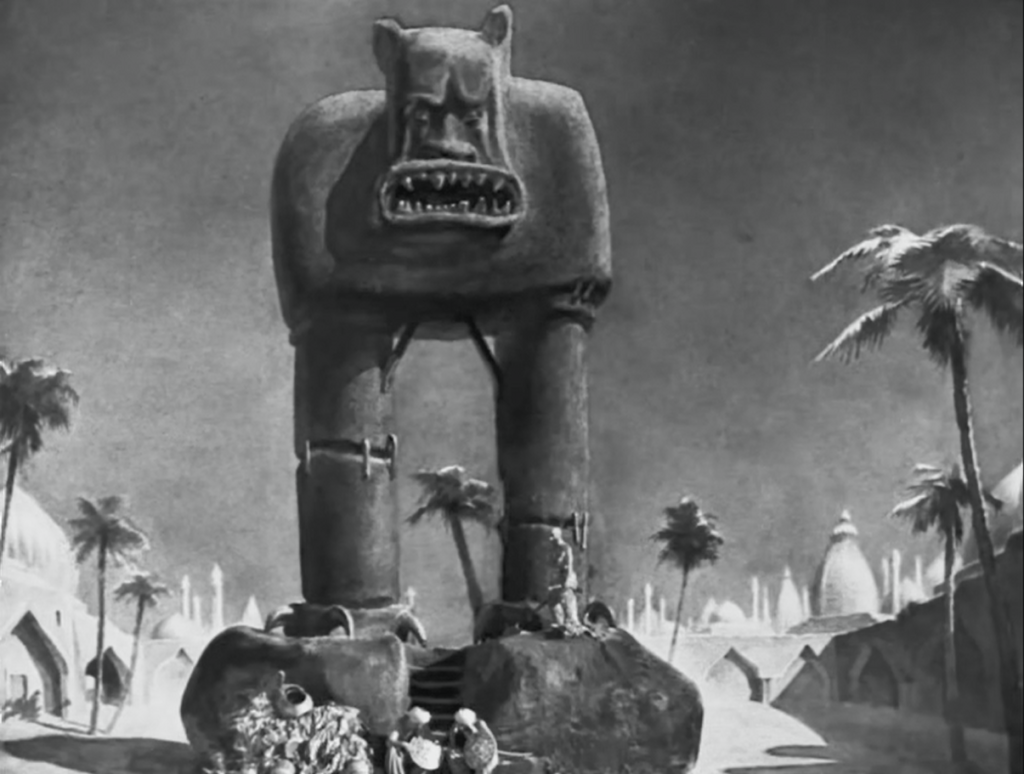
One of the jackal idols of Kashchei.
With Bulat now in tow as a heartthrob sidekick, the two reach Kashchei’s fortress, built into a mountainside with another variation of the jackal face, its jaws lowering to form a drawbridge over a crevasse, guarded by soldiers with faces hidden in helmets that make them looks insectoid (or perhaps like the goblin soldiers of Labyrinth). Here Kashchei keeps Marya in a state of eternal sleep, lying upon a slab like Snow White, a condition he seems to have magically tied to her engagement ring: when he puts it back on her finger, she comes to life; when he removes it, she falls back into sleep, and he uses the ring to stop the downpour of a waterfall so he can access his secret chamber. Kashchei is introduced with the flash of a lightning bolt and the sudden apparition of his gaunt frame swathed in black shadow, the light only falling in pinpoints on his eyes, so that they seem to glow white. As the shadow fades, he’s revealed to be wearing a breastplate shaped like a ribcage with bony epaulets like little wings. He’s played by the wiry actor Georgiy Millyar, who would become the definitive cinematic Baba Yaga in many fairy tale films, and would again play Kashchei in Rou’s Through Fire, Water and…Brass Pipes (1968). Momentarily reviving Marya while Nikita and Bulat look on in hiding, Kashchei proposes marriage, and inadvertently reveals how he might be slain: by finding and destroying his heart which is in a black apple on a black tree that grows on a black hill. (In various fairy tales, Kashchei’s heart is always hidden like a Russian nesting doll.) He also reveals that anyone who discovers his heart will be turned to stone.
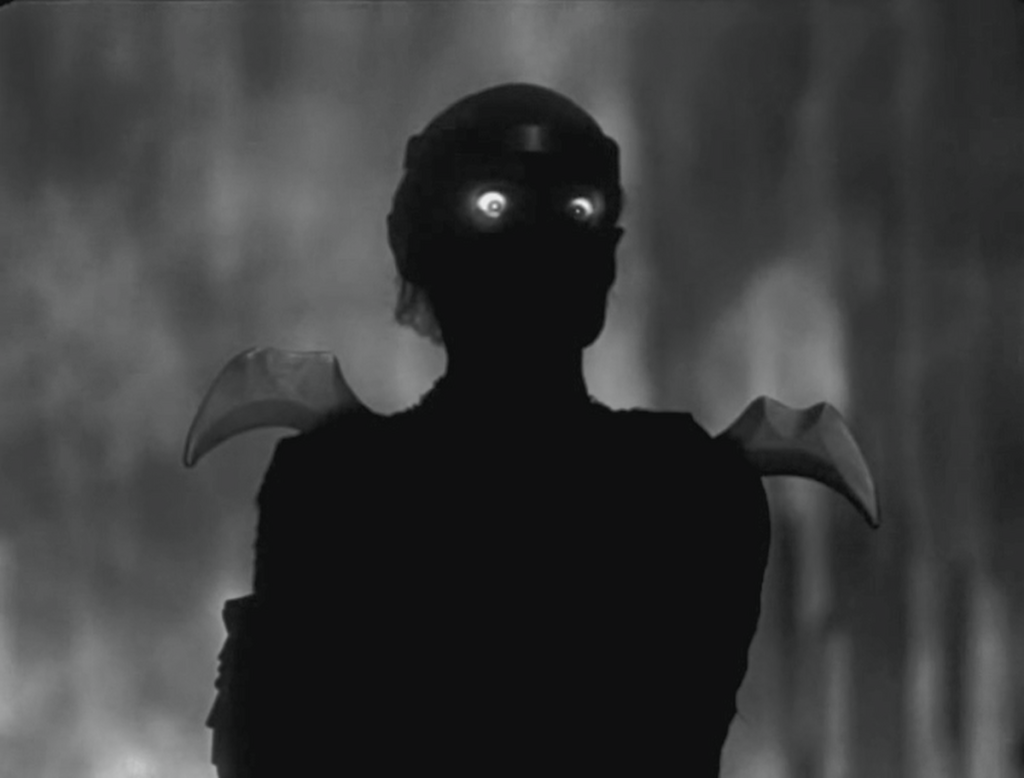
Georgiy Millyar as Kashchei the Immortal.
Though Nikita can revive his lover by placing his ring on her finger, when they’re cornered by guards Marya plunges herself back into sleep by throwing the ring at Kashchei’s waterfall, giving Nikita and Bulat an opportunity to escape. Here is where it feels that the film is missing a reel. Nikita, on horseback once again and with an army suddenly behind him, is confronting Kashchei and his army on a battlefield while, in a distant corner of the world, Bulat comes to the black tree on the black hill where Kashchei’s heart is hidden. Nikita decapitates the villain, who simply grows another head; incredulous, he glances down at the severed head still lying on the dusty earth. He claims victory only when Bulat destroys the hidden heart, which turns him to stone; for a lingering moment his eyes are unaffected, giving a soulful look before they too petrify. Nikita lifts up Kashchei, tells him that he will fight him until he has “no more heads left,” and then smashes him into the ground, which splits in stop-motion. The “deathless” one dissolves into a skeleton, and at that moment Bulat is restored to life, just as the broken spell releases Marya from her eternal sleep. The three pose astride horses with the army behind them, casting profiles like a Soviet propaganda poster – albeit an odd one, as Bulat still has a turban on his head and giant loop earrings. I’d imagine this film, arriving after the long war was finally coming to an end, would have brought warm applause from its audience – Hitler had fallen, Stalin was victorious, and the land was defended and restored.
